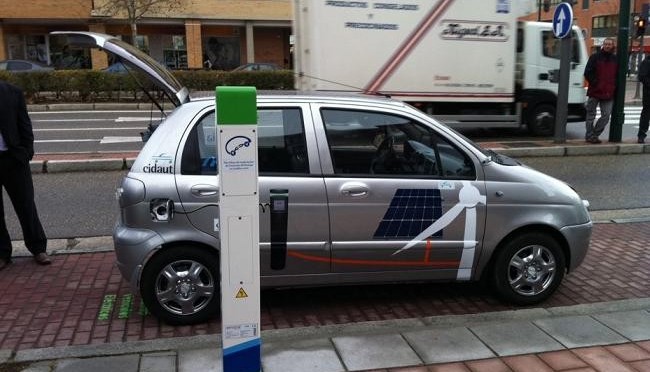Sounds for electric cars should have the characteristics of engine sounds which alternate in pitch, frequency and volume in relation to speed and acceleration.
These are just some of the conclusions found in “White paper on external sounds for electric cars”, the first report on sound design and requirements for sound systems in electric and hybrid cars.
ECTunes in cooperation with research institute DELTA SenseLab are responsible for this significant report.
Silent operating electric and hybrid cars can be a challenge to city traffic and as a result, various countries are now adopting measures which in time will legally require external sound systems on electric cars. But what types of sounds should be used?
Specializing in developing intelligent sound systems for electric and hybrid cars, ECTunes have, in cooperation with DELTA SenseLab, explored the possibilities. Together the two companies now release a brand new report specifying how optimum car sound is constructed. The recommendations are based on accumulated knowledge, new research and the results of lab and field tests. The project is partly financed by innovation funds from the Danish Sound Technology Network.
Positive and intelligent sound
”We now know that all electric cars at some point will need external sound, mainly to increase traffic safety,” says Jesper Boie Rasmussen, CEO at ECTunes, and continues: ”Our challenge is to customize the sound to match the situation without being annoying or creating unnecessary noise – a challenge the report deals with by giving concrete recommendations. We have participated in the studies to gain knowledge about how to optimize our systems and be able to guide our automotive clients in terms of future sound development”.
Recommendations and requirements for sounds
The study shows that different kinds of sounds are relevant for electric and hybrid cars: Engine start sound, forward sound and reverse sound.
The engine starting sound must be short – 1-2 seconds. This sound indicates that the car is preparing to drive.
The forward sound should be a non-melodious engine-like sound. Its frequency should be between 200Hz and 2000Hz and at the same time it should change character tone as the car’s acceleration and speed change. Also, the sound must disappear as soon as the speed reaches 25 km/h, where wind and tire noise are enough to alert pedestrians and cyclists.
The reverse sound should be an additional sound on top of the driving sound – similar to a regular combustion engine car.
Recommendations and requirements to system
The optimal sound system for electric and hybrid cars include three to four loudspeakers – one in each corner of the car – but in principle, two loudspeakers would be sufficient as long as one directs sound forward and one backwards.
The loudspeakers should deliver a broadband acoustic image, which enables pedestrians to localize the car by the sounds produced. The volume must also adjust to background noise. Sound frequency should be between 200 and 2000 Hz and sound level up to 70 dB(A) at 2 meters distance. The preferred loudspeaker is an electromagnetic transducer built to resist extreme temperatures and weather conditions.
The system is connected to the car’s databus for retrieving key information about speed, acceleration and direction.
Intelligent sound systems soon ready
In the end of 2011, ECTunes will be introducing a number of external sound systems for the automobile industry and industrial cars. The systems will range from a low-price ’all-in-one box’ to more advanced solutions with multiple loudspeakers. Additionally ECTunes will also present a system customized for industrial cars like electrical forklifts.
All solutions will include ECTunes’ uniquely designed loudspeakers, which deliver high quality sound, reliability and performance in a small and lightweight form factor. The systems are designed to be placed on the outside of a car and are resistant to extreme temperature fluctuations and environmental impact. The systems also include ECTunes’ unique sound engine and sound development tool, which allows customers to develop new individual branding sounds. These systems already meet the requirements given by upcoming legislation in Japan and USA.
ECTunes is already delivering systems to industrial vehicles such as electric forklift trucks and several systems are being tested in the R&D departments of leading electric and hybrid car manufacturers.
Find additional information and download the white paper at www.ectunes.com or www.madebydelta.com/senselab.


